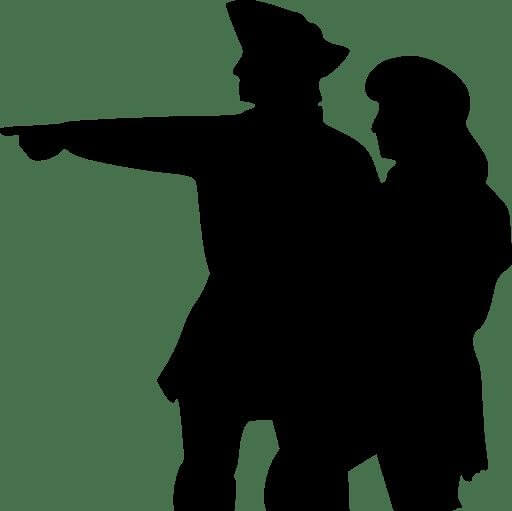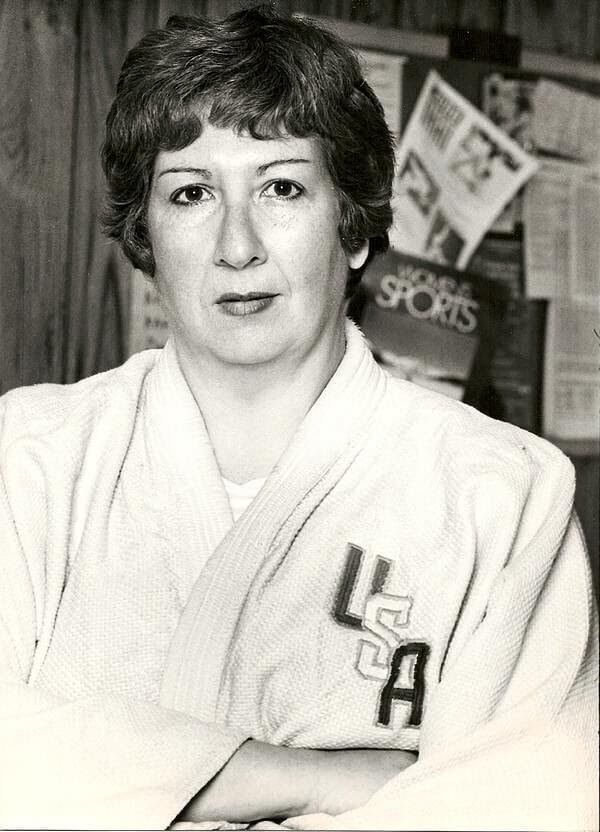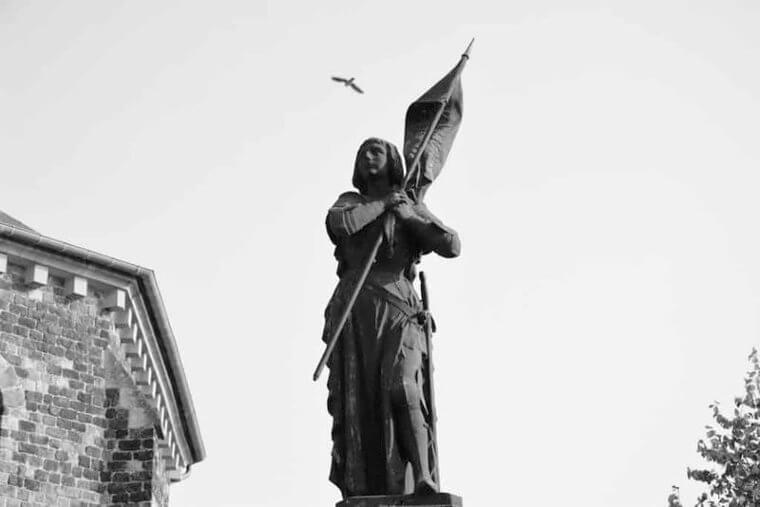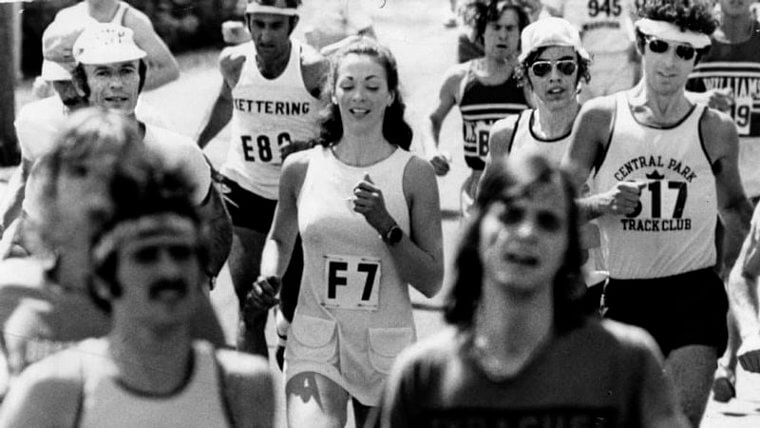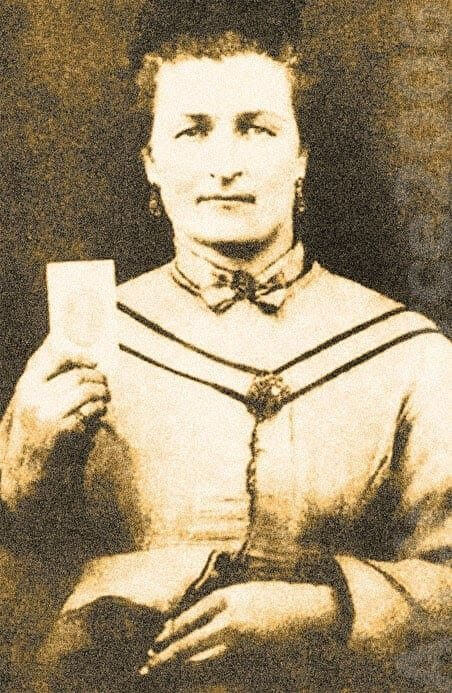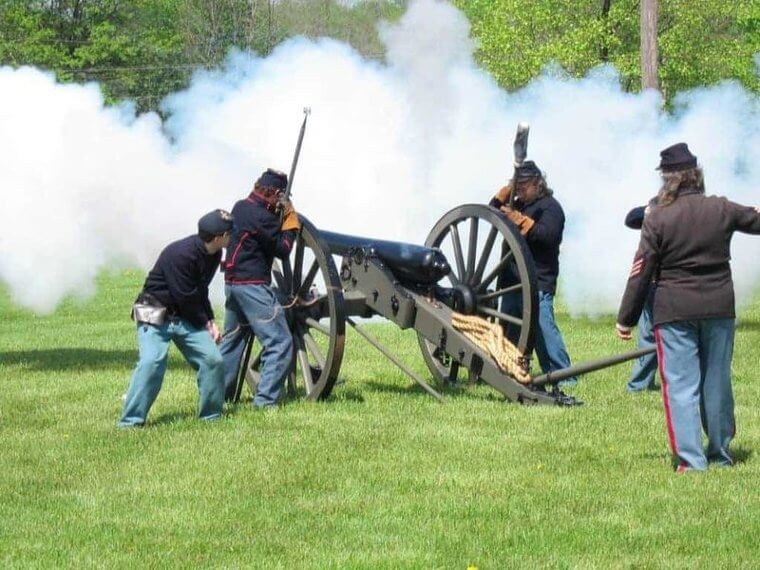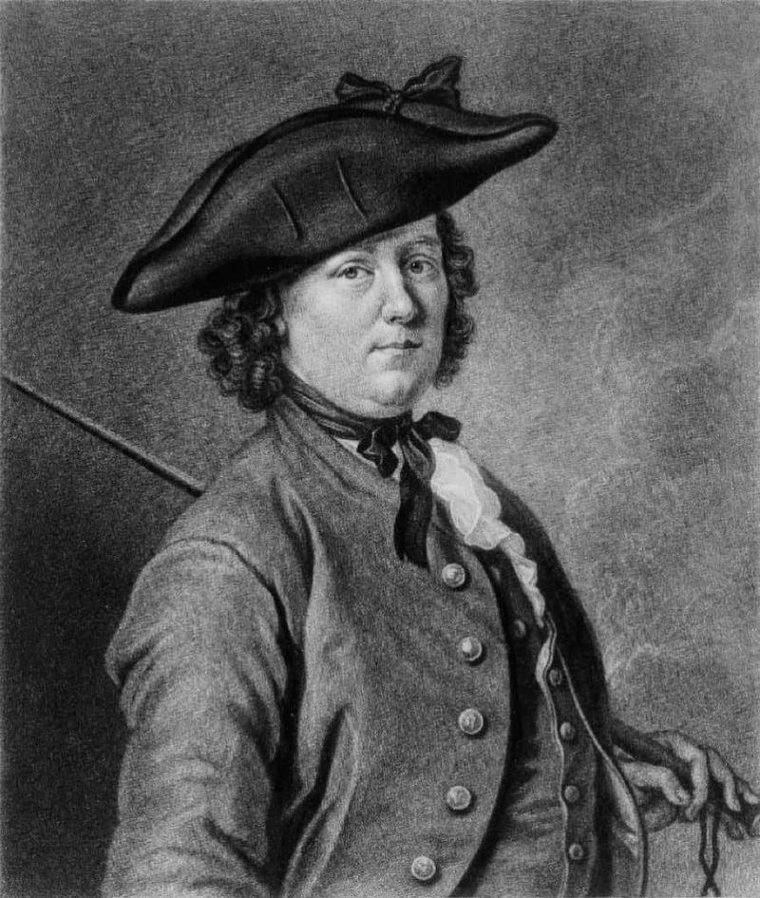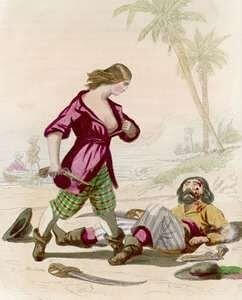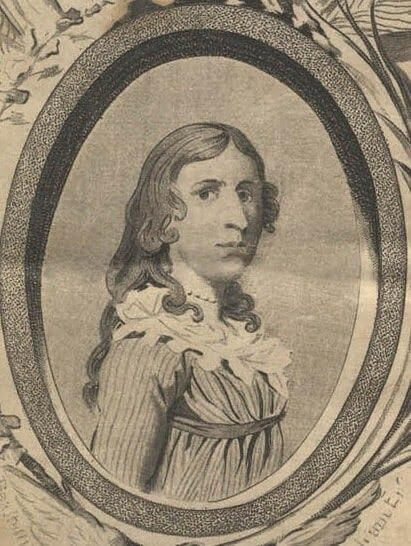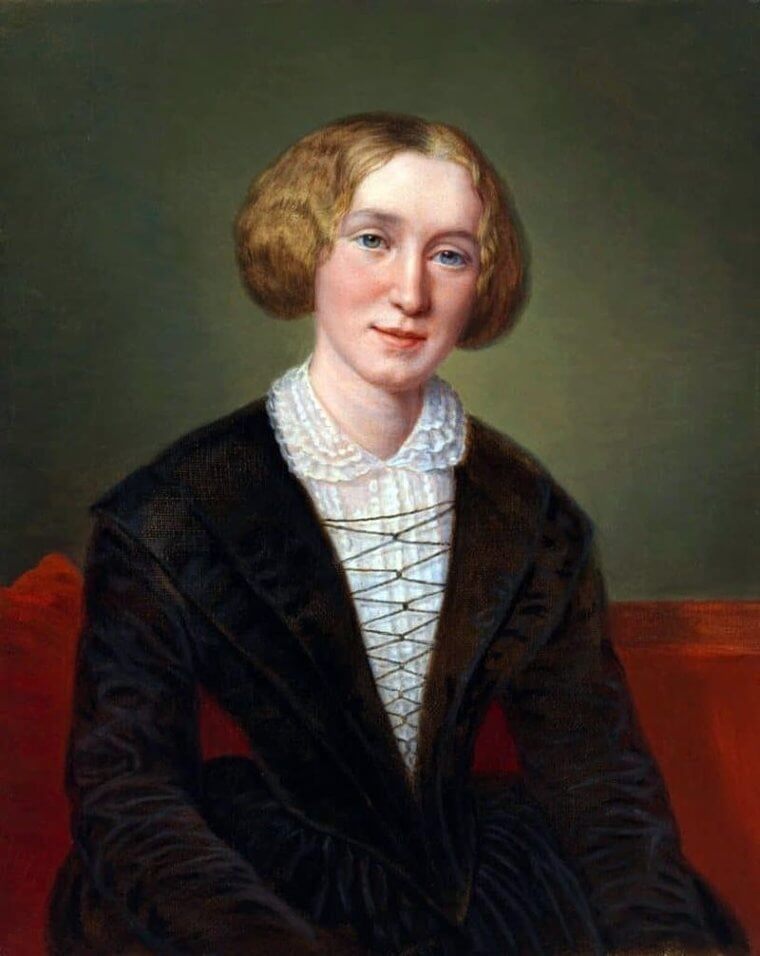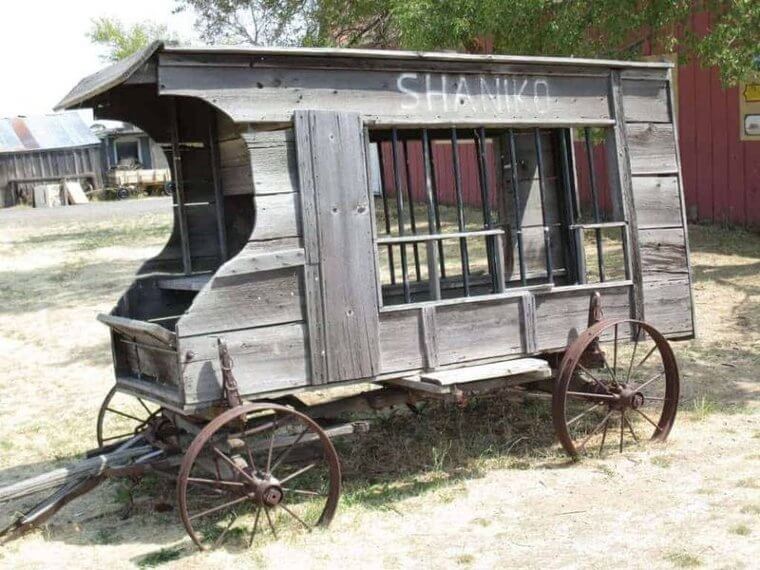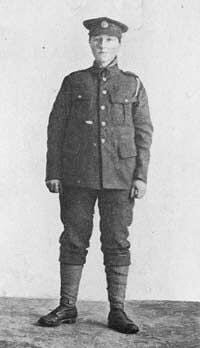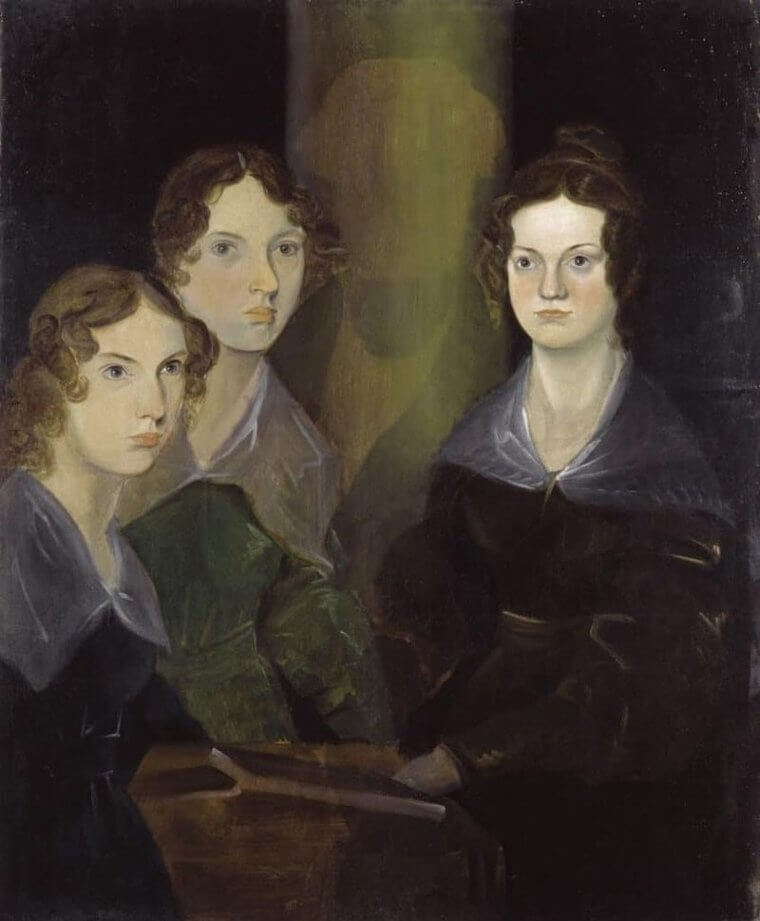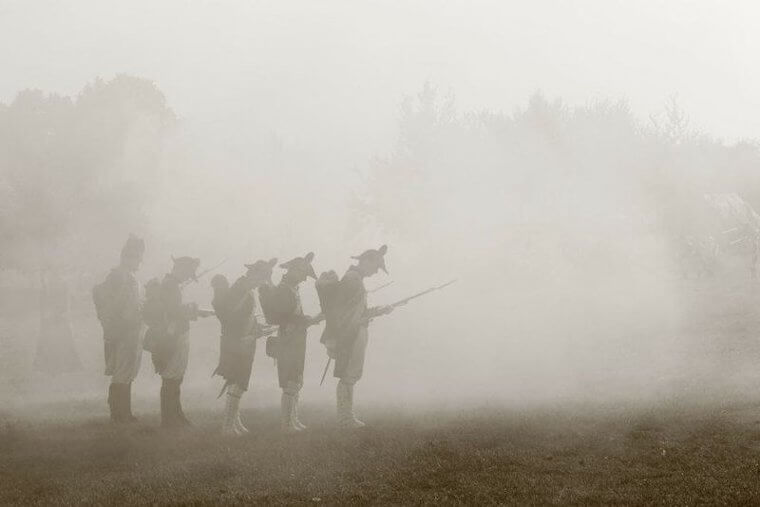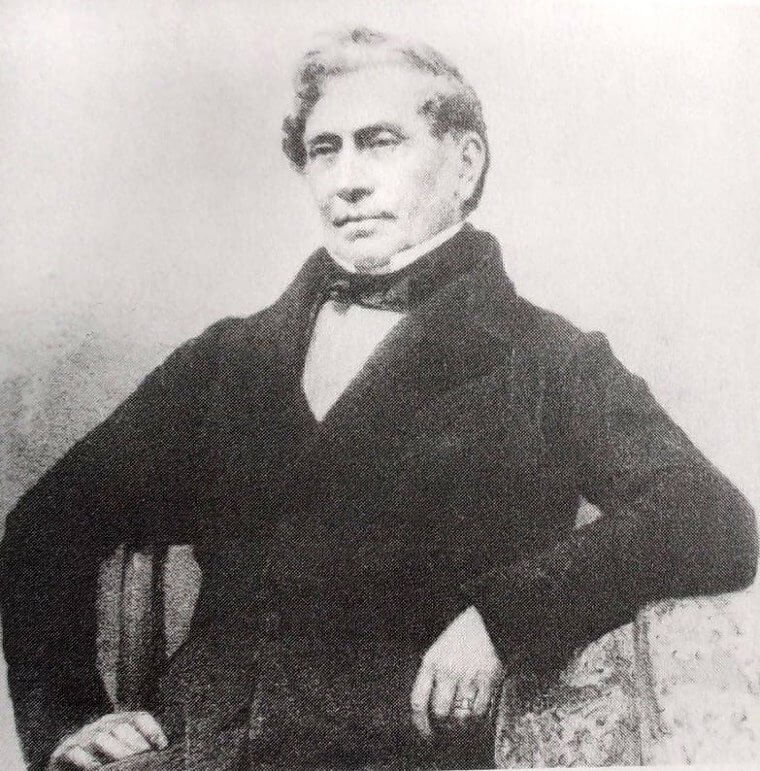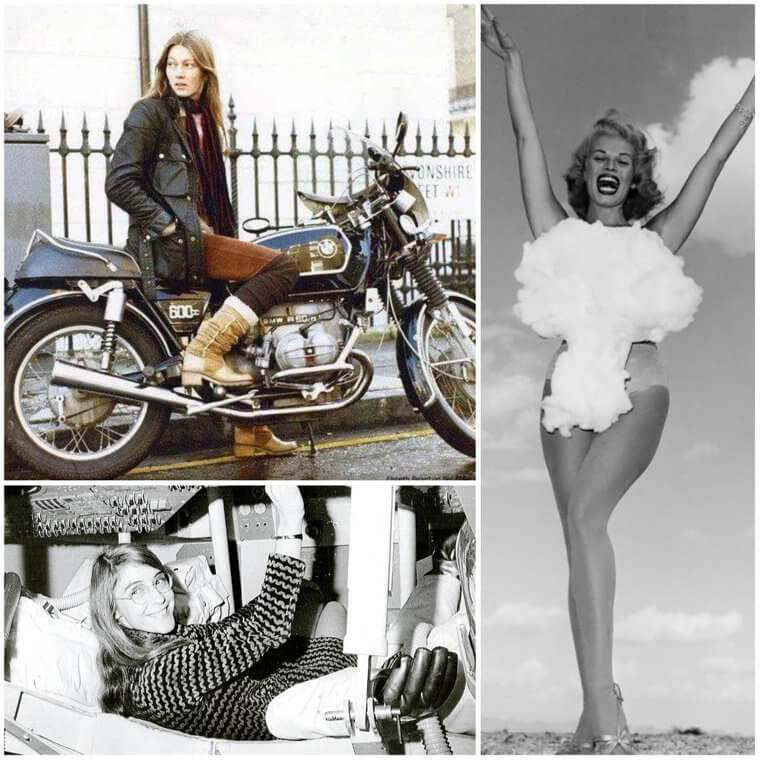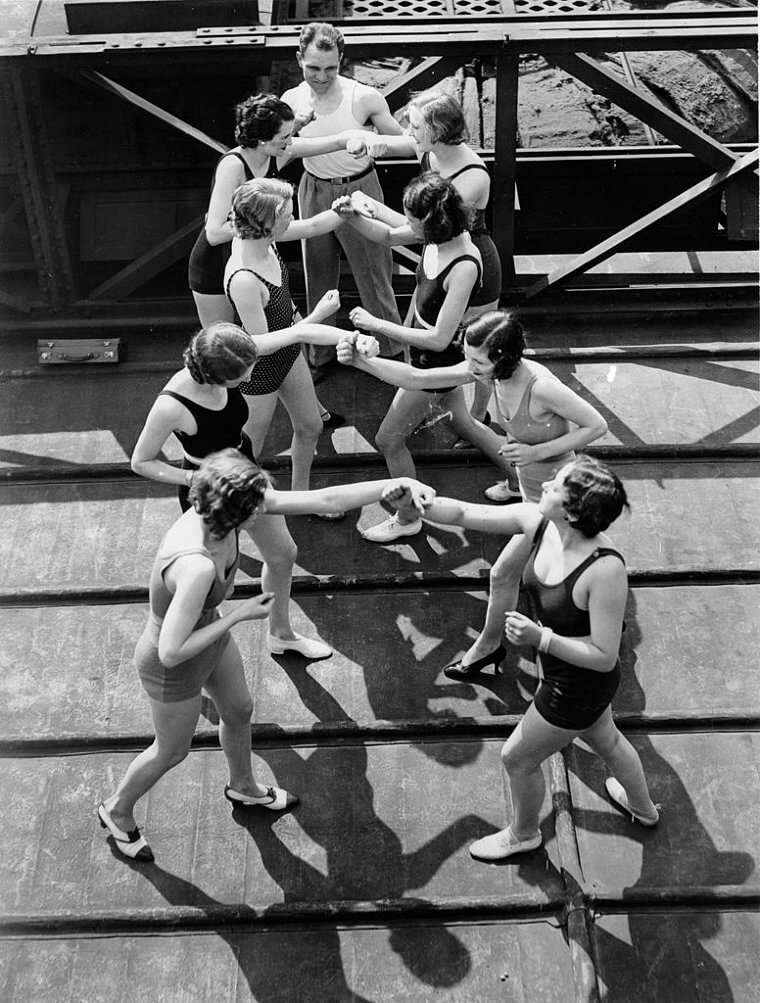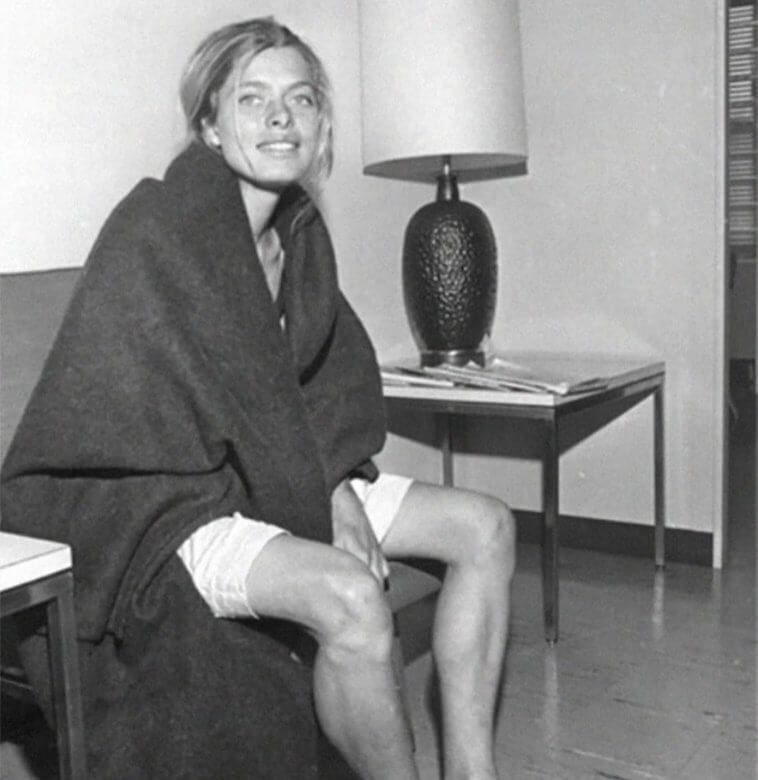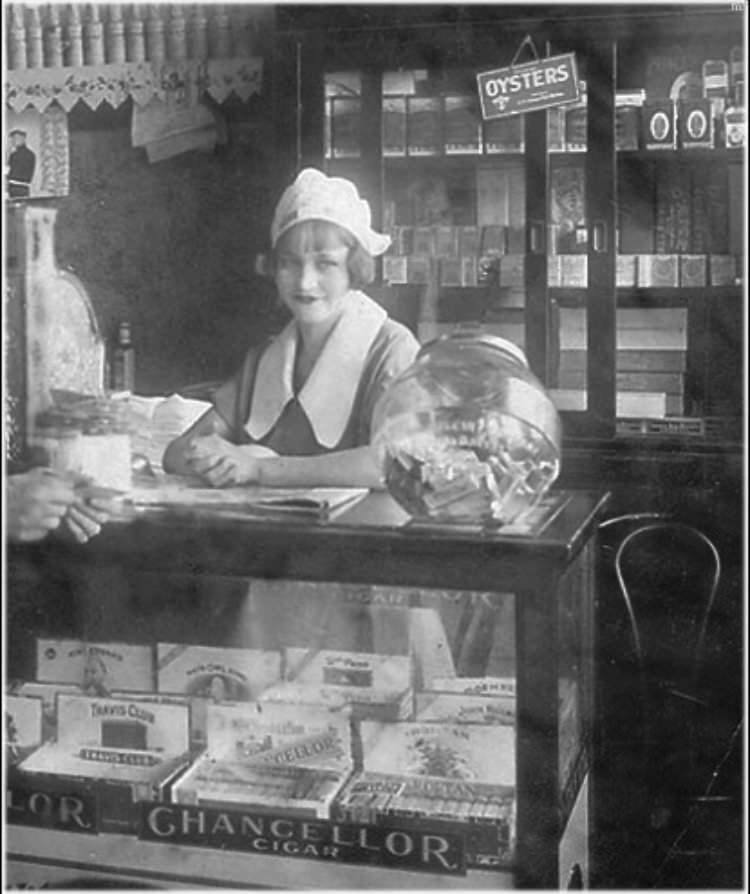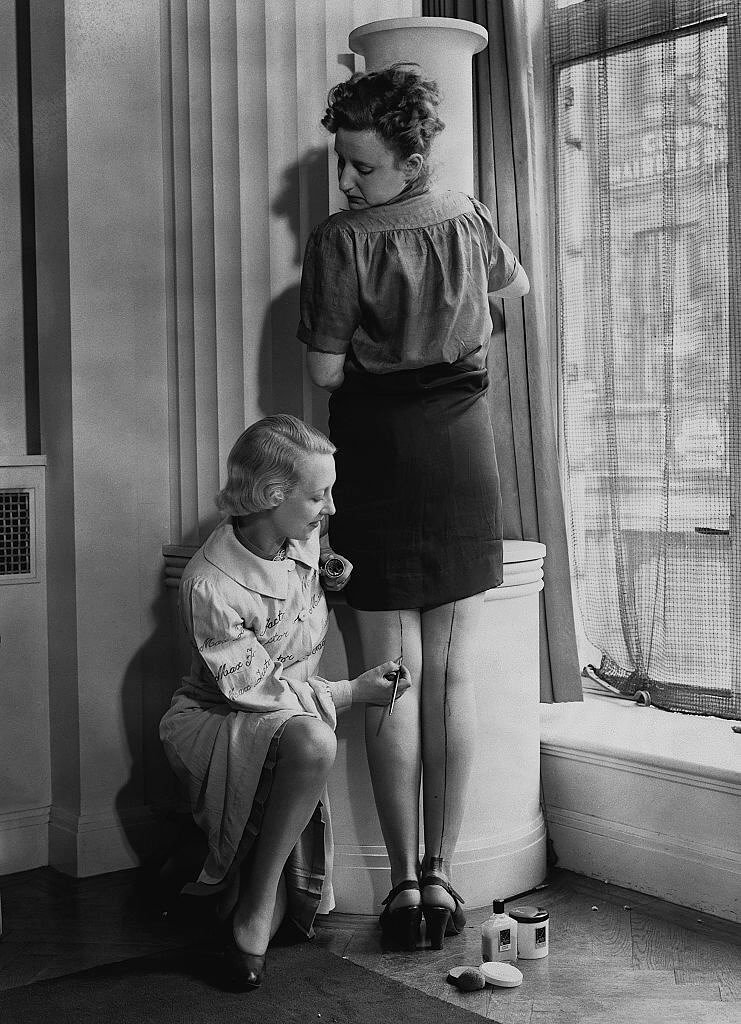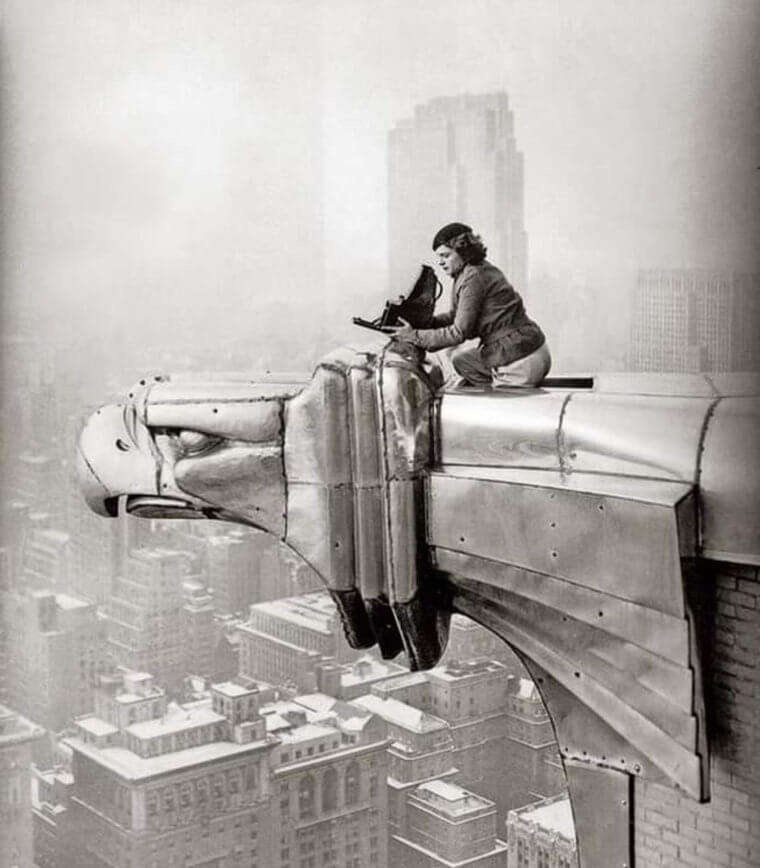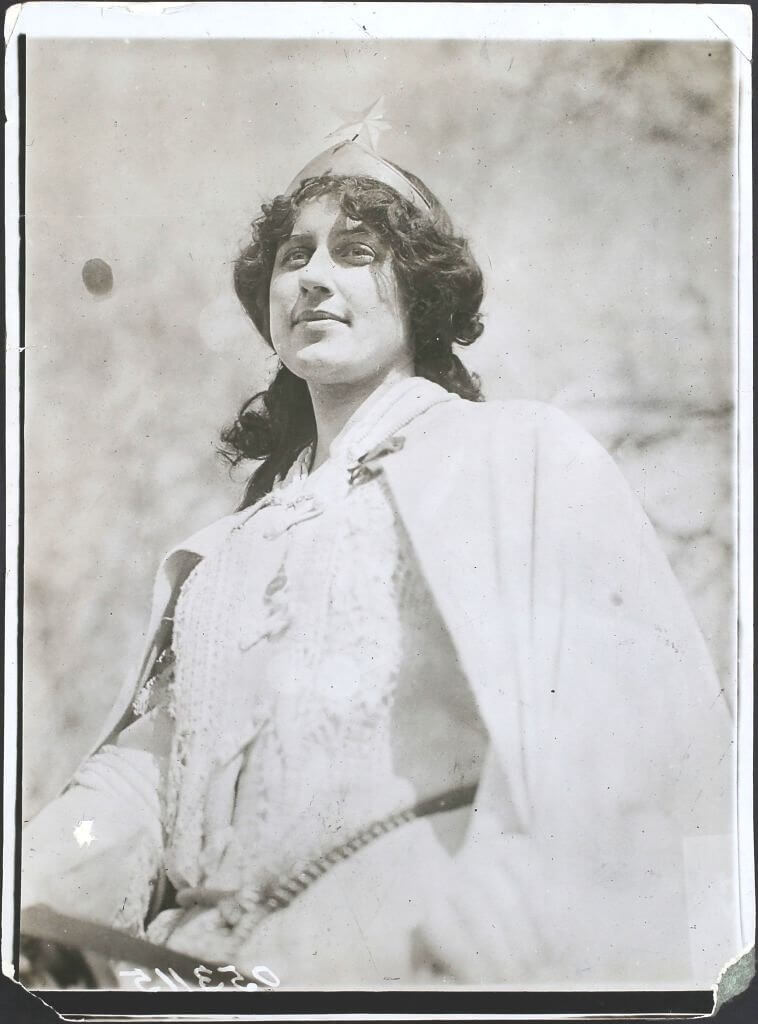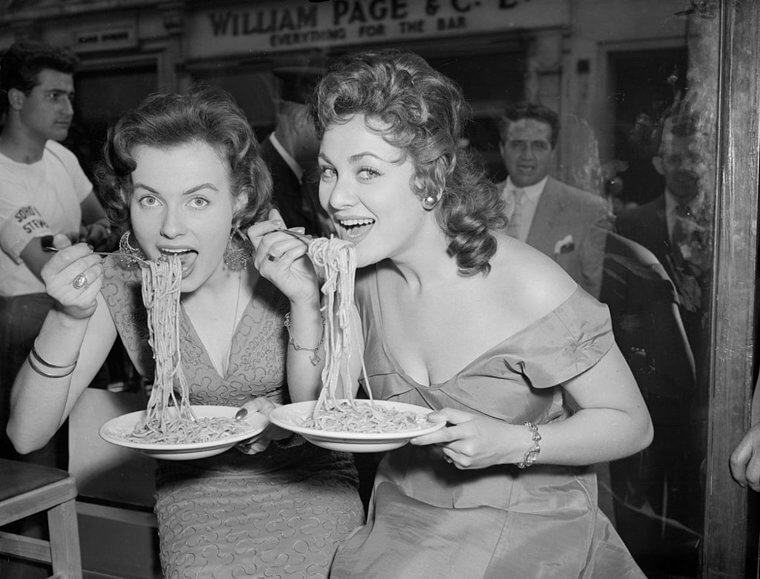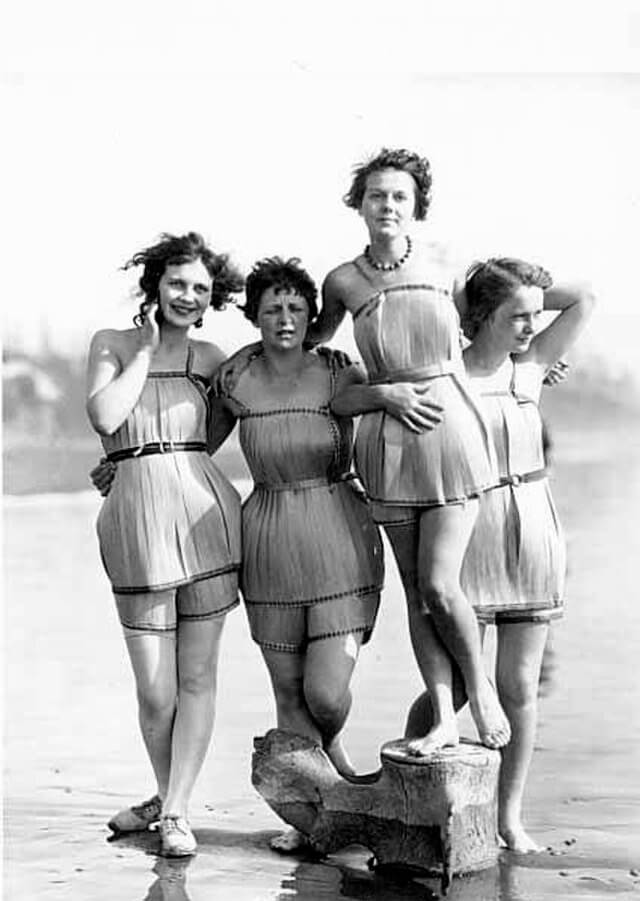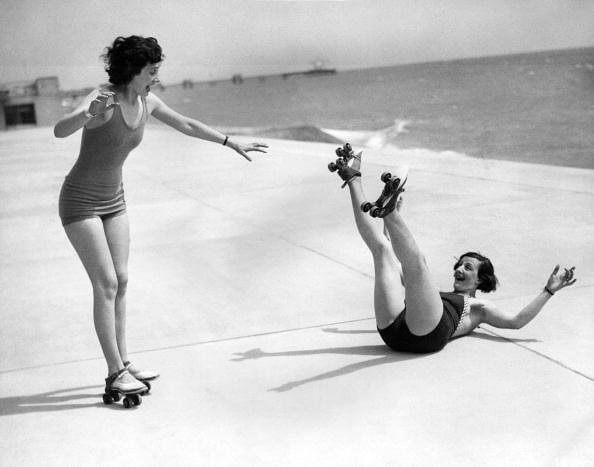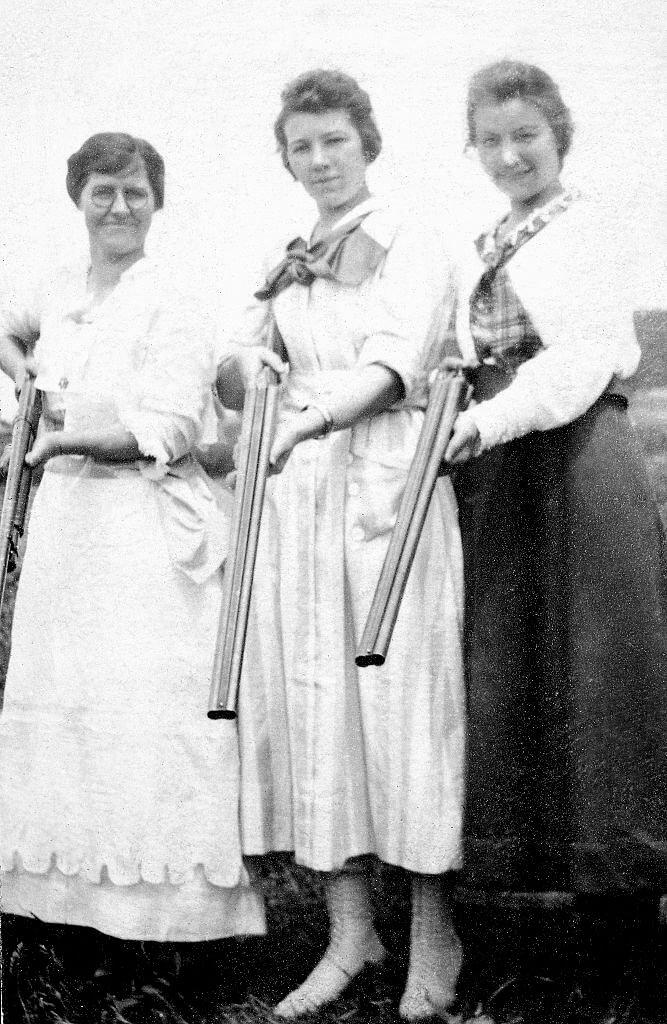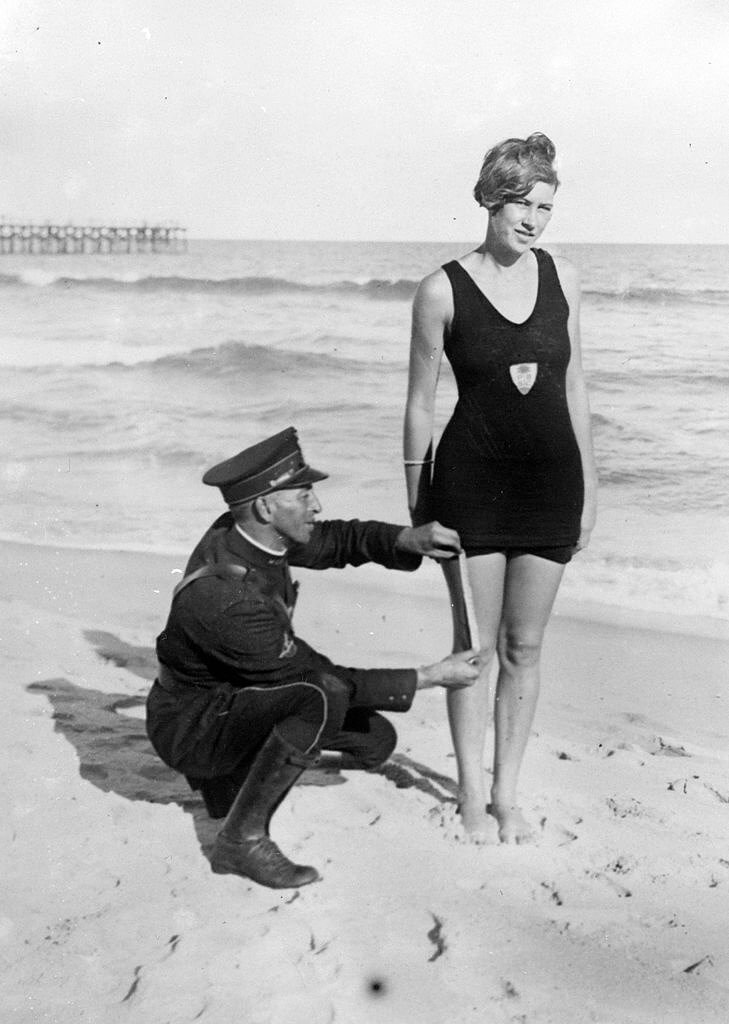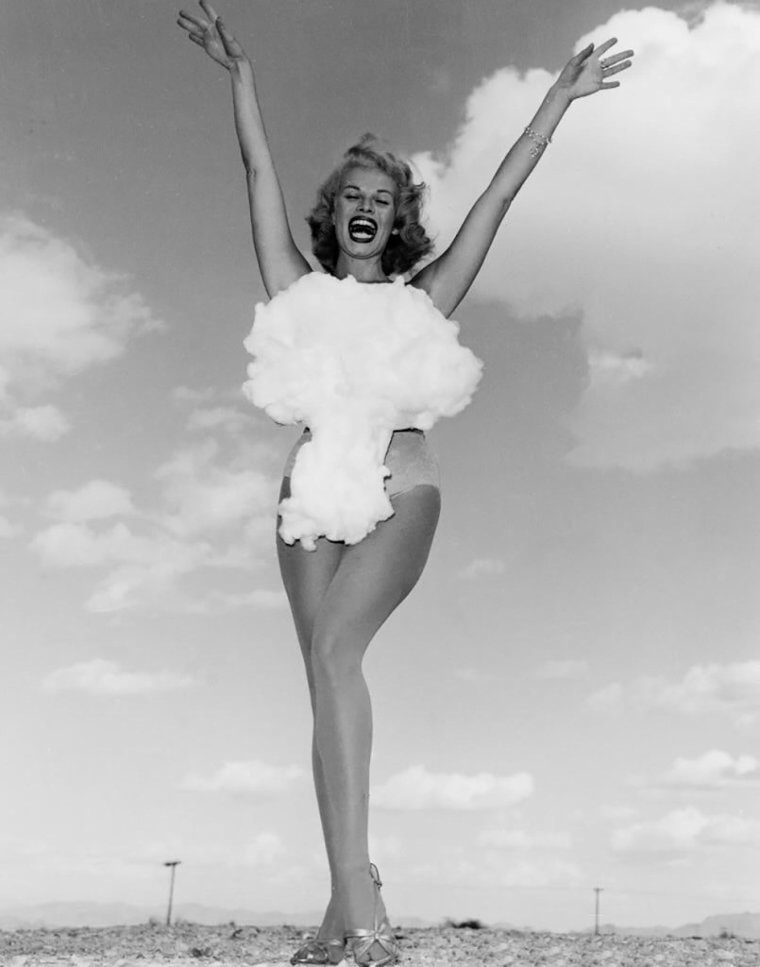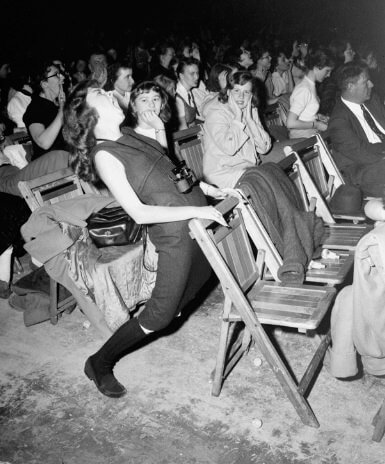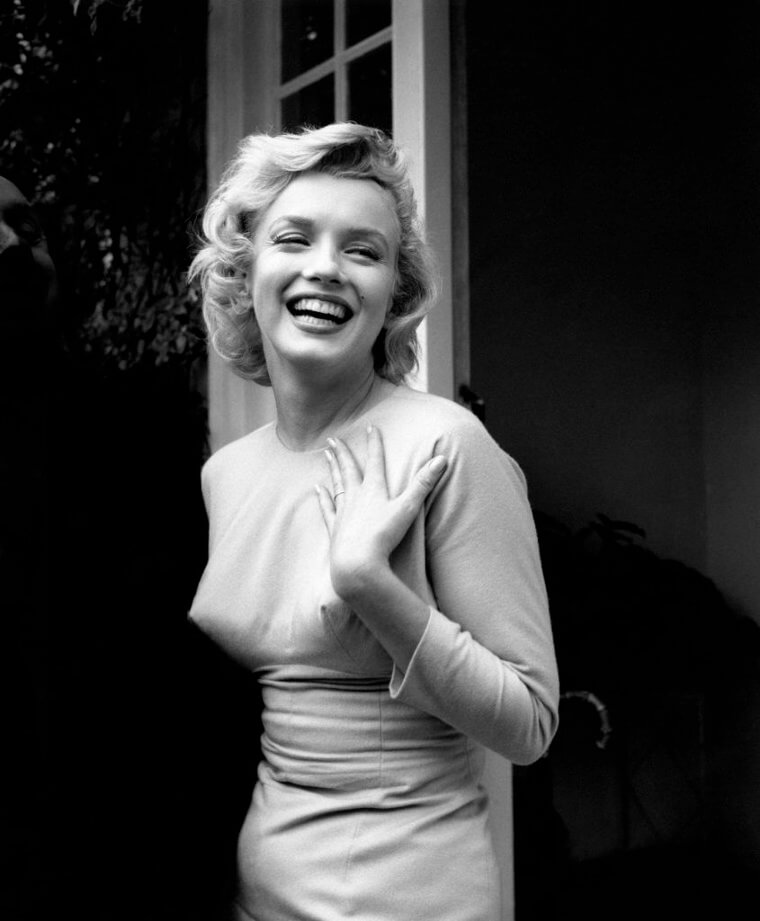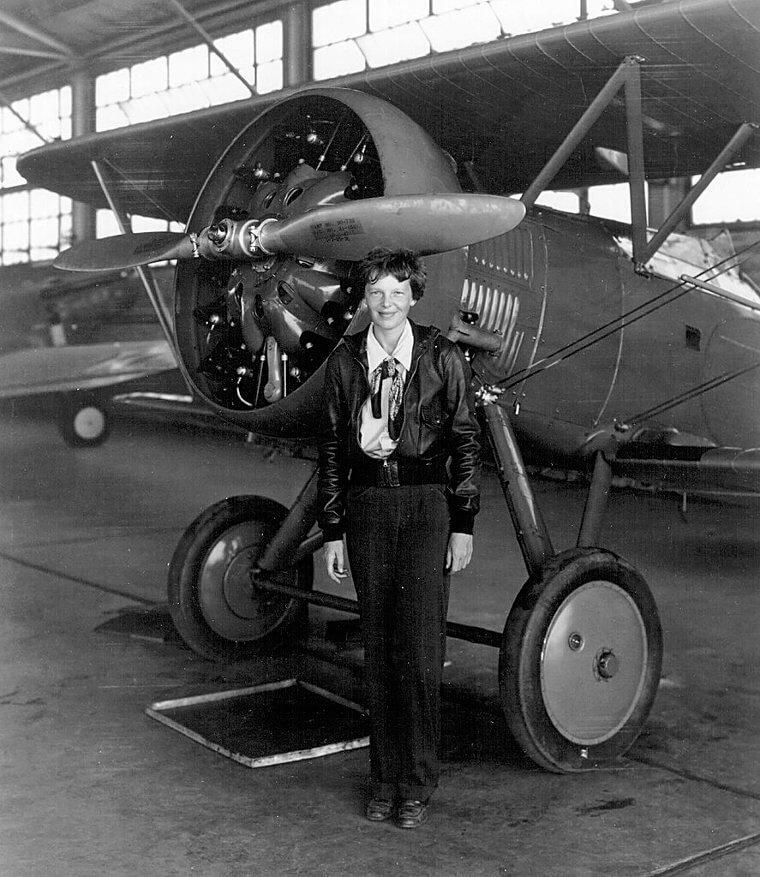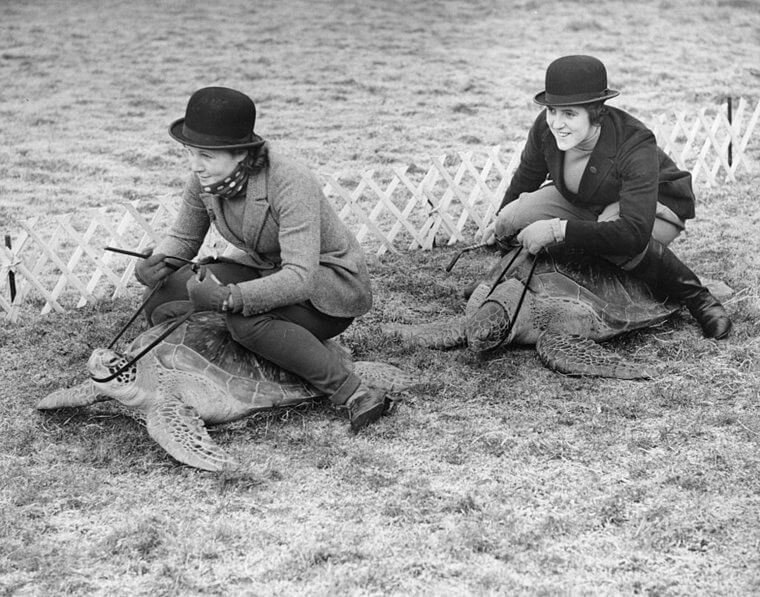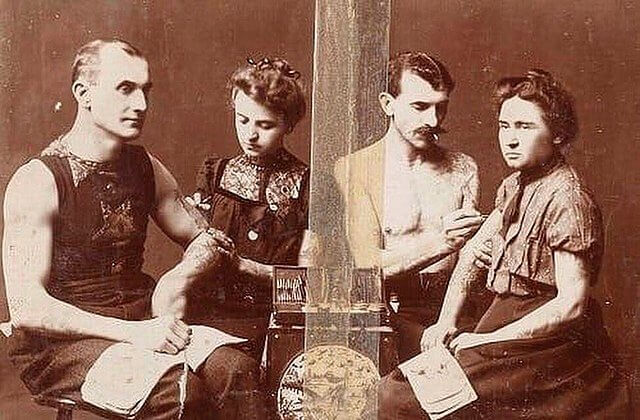Society loves to tell women what is “appropriate”. They are expected to be demure, and ladylike, and a million other things codified either by practice or law. If they don’t follow the rules they are branded shrill, unseemly, or worse… difficult.
Nevertheless, there are always women out there who are willing to break unjust rules and make a splash. The women in this article risked everything to make their mark, break down barriers, and change the world. Enjoy learning about twenty women who made history masquerading as men!
Elisa Bernerström
When Russia was fighting Sweden in the early 19th century, Elisa Bernerström took on the role of a man so she could join the ranks of the Swedish army. Elisa was a maid working in Stockholm where she met Bernard Servenius, a soldier stationed there. They fell head over heels for each other and got married: a perfect little love story. However, Bernard’s regiment left to fight, meaning Elisa would be without her beloved. Or would she...
Willing to do anything to live and die with her husband, she hid her gender and enlisted. She shielded her identity in order to be with and support the one she loved. Elisa turned out to be an excellent soldier, receiving multiple citations for her bravery. She was noted several times for stealing enemy ammunition and giving it to her comrades. Eventually, the secret of her gender was revealed, and she was fired from her service. Her husband was originally assumed to have died in combat during the Battle of Ratan Savar, however, he was eventually found as a prisoner of war. When the war was over they reunited in Stockholm. Elisa was not the only woman to take rank in the Swedish army, but she is one of just a small number who were recognized for their bravery in battle.
Rena Kanokogi
Rena Kanokogi was a renowned Jewish-American judo practitioner, widely regarded to be top-ranking in the sport. However, in 1959, she was summarily told that she would not be allowed to compete due to her gender. She adopted the guise of a male in order to take part in a YMCA martial arts tournament. A tournament she resoundingly won, trouncing every single one of her competitors. Once her womanhood was discovered, Rena had the medal she won forcibly taken off her. Despite this, she never ever gave up on her aspirations. She doubled down and made plans to travel to Japan to continue her training.
Rena Kanokogi was admitted as the first woman to train with men at Tokyo’s Kodokan Institute. She also founded the first female world championship, which was hosted in Madison Square Garden’s Felt Forum. In 2009, fifty years after she had her first-place medal taken away, Rena was re-awarded a gold medal by the NY State YMCA as a commendation for her contributions to judo as a sport. “[The medal] should have never been taken from me,” said Rena Kanokogi, “But we’re righting a wrong, that’s what counts.” Three months later she died.
Joan of Arc
AKA the Maid of New Orleans, Joan of Arc saw a vision and acted on it, and in doing so changed the course of history. In a dream, she was visited by Saints. Heeding their words, the peasant girl donned armor as a disguise and adopted the persona of a man in order to lead the French army to victory over the British in the Hundred Years’ War. Joan turned out to be a stupendous leader, with King Charles VII becoming her staunch champion. She led forces during a siege, leading to her gaining prominence with the monarchy. Several swift victories followed under her command, eventually leading to Charles’ coronation. Hence his appreciation for her.
Joan was eventually captured by the Burgundian faction. These people were a group from the French nobility who were allied with the English. They handed her over to the British, who put her on religious trial. The charges were many, and including transvestism. The verdict was guilty and she was burned at the stake in 1430 at the still tender age of nineteen years. The French eventually exonerated Joan of Arc for her bravery. In the centuries following her death, she has become a heavily featured popular figure in books, portraits, cinema, and much much, much more.
Norah Vincent
Meet Norah Vincent: journalist and “gender spy.” She assumed the role of a man and went undercover in this disguise for 18 months. She took on the name Ned Vincent and set to work on, arguably, the most gonzo exploration of gender the world has ever seen. She was determined to see and understand the world from a male point of view. Norah went all out on her transformation. She had stubble glued to her face, underwent extensive vocal lessons to alter her voice, she even took to wearing a jockstrap to make her physique seem all the more masculine.
She wrote a book about her experience titled “Self-Made Man: One Woman’s Year Disguised As A Man” and it was released in 2006. Her social experiment allowed her to fully realize the benefits of being a woman and the drawbacks of being a man. Her book reads thus: “Men are suffering. They have different problems that women have, but they don’t have it better. They need our sympathy, they need our love, and they need each other more than anything else."
Kathrine Switzer
The Boston Marathon was something that Kathrine Switzer had talked about with her coach many times. In the 60s it was forbidden for women to compete, but she vowed to be the first one to do it. Using the name K.V. Switzer she signed up for the marathon in 1967, making good on the promise to herself. In doing so she became the first woman to run the historic race. Years later Switzer recalled how, just briefly before the start of the marathon, a fellow racer named Tom suggested she remove her lipstick so as not to stand out. She declined to do so. After the Marathon when she spoke to the press, she simply explained that she liked to run. The greater the distance, the better. She fiercely, yet nonchalantly, declared that she would return to the race even if her club was barred from competing.
Kathrine was a driving force behind many changes for women in the athletic community. In fact, in no time at all, the rule barring women from entering the competition was lifted, in no small part due to her efforts. But why stop at one history-making moment? In 1974 Kathrine took home the gold in the New York City Marathon, and in 2017 she returned to run the Boston Marathon once again to celebrate the fifty years since her rule-shattering run.
Malinda Blalock
In a story reminiscent of one you read about just a few slides ago in this very article, Sarah Malinda Blalock enlisted in the Confederate Army in 1862 during the American Civil War under the name Samuel Blalock. She did this to support husband William Keith Blalock who had signed up to fight with the 26th North Carolina Regiment. They had been married for little more than a year, so, naturally, Malinda was afraid for her husband’s wife. She told authorities that she was her husband’s brother, and ended up in the same federal unit that he was marching with.
Posted to a relatively quiet sector in the East of the state, The Blalocks saw little combat for the first portion of their soldiership. However, during a mission to seek out enemy soldiers one night, Keith and Malinda suddenly found themselves in the heart of a battle. Malinda took a bullet to the shoulder. Whilst undergoing medical care her gender was in danger of being discovered by her unit. Her devoted husband rolled himself in poison oak, tricking medics into believing his fever and spots were smallpox. After he was sent home, Malinda requested discharge in order to go home and tend to her “brother.” Her colonel denied her request, forcing her to confess to her lies. Defection became one of few decent options open to them. They headed north, and Keith eventually entered a Union regiment thanks to Malinda’s support.
Sarah Emma Edmonds
Whilst we’re still in the right century, it would be a disservice not to discuss Sarah Emma Edmonds, another lady who took on the part of a man to fight in the American Civil War. Born a Canadian, she took a post as a member of the Union army, shouldering duties as a field nurse and spy. She believed strongly in the cause of the Union and joined the 2nd Michigan Infantry in order to fight for it. Sarah became the regiment’s mail carrier and was charged with dangerous espionage missions. Her exploits behind enemy lines ended up in her memoirs, providing a juicy read for many historians. Further duties for her included acting as a stretcher-bearer, retriever of wounded soldiers, and latterly she became a hospital attendant.
Before she could finish her service, Sarah Edmonds caught Malaria In 1863. She attempted to secure leave but was denied. Fearing discovery of her gender she refused medical care from the army. With no other options open, “Franklin Thompson” mysteriously disappeared from his unit and was charged with desertion. But she wasn’t done being a part of the Union effort. She joined the United States Christian Commission as a nurse and served with them from June 1863 until the war’s end. Her memoirs, “Nurse and Spy in the Union Army”, were published in peacetime and she donated the profits from it to financially aid veterans of the war.
Saint Marina
Way back in the 700s, Saint Marina (then just Marina) assumed the guise of a boy in order to go to a monastery with her father. Women were banned from going inside, so this was the only way she could do so. The young girl’s life was reshaped forever by this event. Marina took on the name Marinus and became a monk at the monastery. After several years there she took to traveling with her father. However, an innkeeper’s daughter falsely accused Marina of impregnating her. This was clearly impossible, but Marina would not be able to prove this was the case without revealing her secret.
Rather than reveal her truth, Marina instead acquiesced to raise the child herself following her ex-communication from the monastery. It was not until after her death that her true name and identity were revealed. The saint virgin and martyr Marina of Antioch has since become the patron saint for sufferers of kidney disease and the protectress of nephrology.
Hua Mulan
You’ve doubtless heard of “Mulan”, the beloved Disney animated film. Well, it is based on an Ancient Chinese ballad believed to have come into existence around the fifth century. The story of the ballad goes thus: Fearing for her father’s frailty, a young girl by the name of Mulan takes his place in the Chinese army and goes to fight for her country. She enters the army at the lowest rank possible and serves with her fellow men for ten years. Reportedly, she was a master of martial arts, handy with a sword, and an excellent archer. Legend says that Mulan was offered a position of command, but refused it, asking only for a camel so that she could return to her family. She then donned traditional female clothing, at which time her compatriots realized who she truly was.
The story of Mulan has fascinated readers and audiences for centuries upon centuries. Over the years it has been adapted and reproduced in everything from plays and operas to films. “Mulan” was first made into a film as early as 1927. Disney brought her tale back to the forefront of popular culture when they made their animated “Mulan”. They also created the straight-to-DVD sequel “Mulan II” that was released in 2004, and are all set to release a live-action version starring Liu Yifei. It was originally due for release this year but was pushed back due to COVID related concerns.
Hannah Snell
People who knew her as a child said that Hannah Snell often played at being a soldier. When she grew up, she simply never stopped. For a significant chunk of the 1700s, she served in the British army as a soldier under the name James Gray. The name was taken from her brother-in-law, as was the suit she borrowed in order to get herself put into combat. Despite being injured in battle twelve times, her gender identity remained secret. This included a wound in the groin area, shining even further light on her resourcefulness. The story goes that she was able to get a local woman with medical expertise to remove the bullet, and therefore avoided the eyes of regimental doctors.
In 1750, Hannah Snell at long last pulled the curtain back on her identity, explaining who she was to her shipmates. “The Female Soldier” was the title of her story, and it went to print in London in no less than two different editions. Despite the embarrassment that she caused, Hannah received an honorable discharge and was even given a military pension, which was nothing short of a rarity at the time. She retired to a life as an innkeeper for a pub called The Female Warrior. In later life, her mind and body deteriorated. She died in an institution in 1791.
Mary Read
There are only two women in all of history who were convicted of piracy. Mary Read (Born 1690) was one of them. As soon as she was old enough she joined the British military as “Mark Read”. The sea became her home in the mid 18th century, an era often referred to as the “golden age” of piracy. Her military career met an abrupt end when her naval ship was stormed by pirates in the West Indies. Mary was forced to join their crew. Despite not taking to it immediately, before too long Mary discovered that the pirate's life was, indeed, for her.
Mary Read teamed up with Annie Bonny, a fellow pirate. She developed a reputation for her ruthlessness and was described as “very profligate, cursing and swearing much, and very ready and willing to do anything on board.” These women and their crew of recruits painted a target on their back when they commandeered a twelve-ton sloop. The governor of the Bahamas immediately declared these outlaws “enemies to the crown of Great Britain.” Mary and Annie were eventually found and imprisoned by the authorities. They were convicted and sentenced to death for their crimes, however, since they were both pregnant at their time of capture, their executions were postponed. Before Read faced the noose, however, a disease took her. In April 1721 she died after developing a fever.
Deborah Sampson
This girl from Massachusetts tried to enlist in the newly founded US army twice, so set was she on joining the Revolutionary War. She succeeded on her second attempt, where she enlisted under the alias “Robert Shirtliffe.” She was taller than most girls at 5 foot 7, which helped her in her ruse. She fought in the war for almost two years. She became a member of the Fourth Massachusetts Regiment, Captain George Webb’s forces. Her tasks included the highly dangerous endeavor of scouting neutral territory to assess the buildup of British troops and equipment in Manhattan
Deborah escaped detection for a good while, though she did have one or two close calls. She took a sword to the forehead and extracted a pistol ball from her thigh herself after being shot. However, an epidemic struck US forces after she had been with the service a year and a half. Sampson became ill and wound up in the hospital, where they realized her gender. She was released from the service in October 1783 with an honorable discharge. After the war, she lived a mostly typical farmer’s life. In 1802, she did a multi-city speaking tour, covering a large spread of the country, where she discussed her life as a combatant. She was the first American woman to ever do this. She would occasionally conduct her talks in full military regalia.
Mary Ann Evans
Under the (largely correct) assumption that her work as an author would not be taken seriously because she was a woman, Mary Ann Evans decided to publish her six novels using the nom-de-plume George Eliot. At the time, female writers were largely relegated to the world of lighthearted romances. Desperate for her work to be judged apart from her contemporary peers Mary Ann took on the masculine name. It also served to keep her private life out of the public eye. Nigh on essential, given that she was having an affair with the married George Henry Lewes, one of the voices in her life encouraging her to write.
The Westminster Review took many contributions from Eliot. The paper was a leading journal for philosophical radicals. She later became editor. Her novels (published by “George Eliot”) were “Adam Bede” (1859), “The Mill on the Floss” (1860), “Silas Marner” (1861), “Romola” (1862-63), “Middlemarch” (1871-72) and “Daniel Deronda” (1876). Her work became known for its realism and psychological insights. Much of it was set in rural England. “Middlemarch” is perhaps the greatest example of her oeuvre, its central theme discussing a heroine living at the wrong point in history.
Charley Parkhurst
Charley Parkhurst had a reputation for being one of the best stagecoach drivers of the Old West. After many of her races, her opponents would be shocked to discover she was a woman. Given to an orphanage at birth, Charley ran away at the earliest opportunity and would wear boy’s clothes in order to work in the stables. There she learned how to drive a coach. Her nicknames included One-Eyed Charley or Six Horse Charley. Though short, she was not to be trifled with, and she quickly earned a reputation as a skilled driver. She had to flee to Georgia after a threat of possible discovery, and then later moved west to California in 1851.
Once on the West Coast, Charley Parkhurst became widely renowned for her stagecoach handling. As a result, she became a sought after mail courier. There is a widely circulated rumor that she became the first woman ever to vote for a Presidential candidate in 1868’s electoral race. In 1879 she died of tongue cancer. In her post-mortem doctors discovered her gender identity and that she had also given birth at some point in her life.
Dorothy Lawrence
During WWI, Dorothy Lawrence dreamed of life as a war correspondent journalist. When her editors told her she had no hopes of them coming true, she decided to take matters into her own hands. She took a cycling trip through the French countryside, used furniture polish to change her skin tone, and completely changed the way she dressed. Using forged documents she posed as a British soldier and became a member of the Leicestershire Regiment.
Dorothy Lawrence, or Denis Smith as her comrades knew her, worked on the front-lines as a sapper with a mine-laying outfit. Ten days went by of her laying mines in the field, however, at the end of this, she became sick and all but had to confess to her commander. Any other way of finding out could have been potentially dangerous to her. The military took her for a spy and arrested her. In order to dissuade other women from following in her footsteps, the military forced Lawrence to sign an affidavit promising never to share her experiences in writing. Though, as you may have guessed due to the fact that you are currently reading about them, she did eventually publish an account of her life as a soldier.
Billy Tipton
Billy Tipton: legendary jazz pianist and saxophone player. Born as Dorothy Lucille Tipton in 1914, she was repeatedly denied a spot on her high school band due to her gender. Nevertheless, she persisted and became a professional musician, however, she still found herself facing career limitations so she began identifying as a man. By 1940, Tipton was presenting as a man at all times, binding his chest to conceal his breasts. He was able to keep his secret from the many bands he played with, and from various women whom he had relationships with.
Tipton’s crowning musical achievement was recording two albums of jazz standards in 1957. The track list included “Willow Weep For Me,” “Can’t Help Lovin’ Dat Man,” “What’ll I Do” and “Don’t Blame Me.” Most counts put the record as selling approximately 17,000 copies, this was generally regarded as a respectable count for an independent record released at that time. With Kitty Oakes, Tipton adopted three sons, but he kept the secret even from them. They were completely unaware of Tipton’s hidden past until his death in 1989 at the age of 74. Tipton’s story has been adapted into an opera, a play, a musical and others.
The Bronte Sisters
Though they now receive full credit on their various works, Charlotte, Emily, and Anne Bronte published “Poems by Currer, Ellis and Acton Bell” using male names in 1846. These false names were also the first ones to appear on their, now considered classic, masterworks. In 1847 Emily Bronte published “Wuthering Heights” using her chosen male moniker Ellis Bell, and her sister Charlotte assumed her pen name for the release of “Jane Eyre.” Anne took on the name Acton Bell in order to get “Agnes Grey” to print. These books are now considered some of the greatest literary feats of all time.
More than fifty years later the Bronte family came forward to explain their use of pen names on their novel and poetry. Charlotte wrote why in the 1910 preface to the then-current edition of “Wuthering Heights.” Emily sadly never had the chance to do so, having died only a year after her book’s publication. “… while we did not like to declare ourselves women, because – without all that time suspecting that our mode of writing and thinking was not what is called ‘feminine’ – we had a vague impression that authoresses are liable to be looked on with prejudice,” Charlotte wrote.
Joanna Zubr
Joanna Zubr fought on the Polish side in the Napoleonic wars. She had to hide her gender in order to fight. In what is now a familiar story, she joined the army in 1808 so as to serve alongside her husband Michal, in the Greater Polish Division. Joanna Zubr became a top-notch soldier, rising up swiftly to the rank of sergeant. The husband and wife pair became a part of Napoleon’s Russian invasion. However, during the retreat, Joanna got separated from her unit and husband
Joanna navigated the treacherous Russian landscape relying on nothing but her own cunning and skill. She was able to make her way back to Poland safely and was there reunited with her husband. Eventually, the pair would find a permanent home in Wielun, where Joanna lived until she died. This remarkable lady was the first to be awarded the Virtuti Millitari medal, the highest Polish military decoration possible. As if that weren’t enough, this award made her the first polish woman to receive an award for battle bravery
James Barry
James Barry was a widely noted military surgeon and, eventually, the British Army’s inspector general. He oversaw the running of military hospitals and, for a decidedly long period of time, held the second-highest medical office the army had, all of this taking place during the early 19th century. James Barry’s birth name was Margaret Ann Bulkley. He badly wanted to serve in the military. Ever the strong-minded and dedicated individual, at 18 years old he reportedly gave his older brother a severe dressing down for leaving behind his study of law. His writing read “Was I not a girl I would be a Soldier!” Barry eventually made good on this sentiment and adopted a male identity in order to serve the military wing of the British Empire
James Barry was a staunch advocate for hospitals and fought extensively to make them safer for his patients. He was also responsible for performing the first cesarean section in Africa where both child and mother lived following the procedure. James Barry was made to take retirement in 1865 as a result of long-term illness compounded by old age. Barry’s birth gender was not discovered until after his death. The British Army was ensconced, by all accounts they were so taken aback by the reveal that, in order to save face, they blocked access to all papers pertaining to Barry. Much of the story remained a secret until a historian took another look at the case in the 1950s.
JK Rowling
Arguably the most famous author of the 2000s, Joanne Rowling adopted her now ubiquitously initialed first name in order to secure publishing for one of the most magical stories of the modern era. Joanne thought that going by JK would help her appeal to her target young male audience. She had a hunch that they might particularly like a certain book she had written about a boy who went off to study magic at a mysterious school of witchcraft and wizardry. “Harry Potter and The Philosopher’s Stone” became the first installment in one of the highest-selling book series of all time. As most of you know, the series eventually expanded to seven novels, as well as a hugely popular film series, further feature spin-offs, a giant online community, several subsidiary books, and an internationally successful play. The works have seen translations into more than sixty languages and are nigh on universally beloved.
Strangely enough, assuming a male persona was not something that just allowed JK to launch her career. It also allowed her to continue it after the Harry Potter books were finished. In 2013 Rowling published a non-Potter book under the nom-de-plume, Robert Galbraith. “The Cuckoo’s Calling” it was called, a crime fiction novel, and the first in the Cormoran Strike series, a run that now has three published sequels. Rowling is quoted as saying that taking on the new name allowed her to “successfully channel her inner bloke!” Editor David Shelley read the book without the knowledge that it was the famed Harry Potter author. Afterward, he admitted to never suspecting “a woman wrote that.”
In the Air, One the Beaches, and On Land: Here Are History's Coolest Women
Despite being referred to as the weaker sex throughout history, women continue to prove their strength, intelligence, courage, and rebellious nature. They have also superseded the expectations of men time and again, much to their chagrin. Aside from a woman's ability to, you know, create life, people of the so-called weaker sex have accomplished so much, walking the proverbial wild side as risk-taking independent thinkers. Here are some women that prove that the quote "Well-behaved women rarely make history" has more truth to it than you may think!
Burning Off Steam
While women have never been considered aggressive creatures by normal standards, they too like to blow off steam from time to time, as seen in this rare 1932 photo of women engaged in boxing training, smiling and enjoying their friendly match.
This historic photo actually showcases a Boxing lesson for beauty queens on the roof of the London Pavillion in Piccadilly! So, were they practicing for an upcoming skit? Or, were they making the most of their break time, catching some rays, and getting a bit of exercise? Either way, these women are amazing.
On the Road Again
Just look at the face of our next fearless woman. What do you see? Confidence, a sense of mischief, a no-nonsense attitude? Probably all three. Introducing Elspeth Beard, an Englishwoman who decided to blow off some steam after completing three years of architectural studies in 1982.
Burnt out from finals, this 24-year-old set off on a journey of a lifetime with only the necessities her trusty motorcycle could carry. Beard wasn’t like other students wanting a relaxing vacation; she was ready to see the world. So, with the money she saved, she shipped her trusty hog from England to New York to begin a whirlwind trip around the world. As a solo female traveler, she conquered Canada, the U.S., Mexico, Australia, Singapore, India, Turkey, and much of Europe.
Setting the Pace
Women have come a long way in sports since the mid-1960s, and part of the reason is because of the woman in this next photo. Bobbi Gibb began running long distances as a youngster, so by 1966, she was eager to compete in the Boston Marathon. Knowing women weren’t permitted, she wrote a letter to the director asking for an exception.
His reply? The director refused her plea stating that women were physiologically incapable of running such distances. Well, Gibb didn’t take no for an answer. Instead, she disguised herself in her brother’s shorts and a baggy sweatshirt and snuck into the race behind the first pack of runners. Once she realized the other contestants knew she was a woman, she shed her sweatshirt and finished the race ahead of 60 percent of the male runners. Her outstanding performance was front-page news the next day.
The Calm Before the Storm
At first glance, the woman in this picture looks like the girl next door politely serving her customer. Just an angel-faced teenager selling cigars and waiting tables, right? The photo was taken at Marco’s Cafe in Dallas, Texas, so this woman most likely did serve her customers with a smile. However, this is no ordinary 18-year-old; this is the notorious Bonnie Elizabeth Parker.
The photo was taken around 1929, a year before Bonnie fell for a man named Clyde Barrow and joined him on one of the most notorious killing sprees in the United States. We aren’t justifying her life of crime by any means; however, Bonnie fits the bill regarding the aforementioned famous quote, “Well behaved women seldom make history.” She made history alright, as one of America’s most notorious criminals.
Where There’s a Will, There’s a Way
With the outbreak of World War II, sacrifices had to be made all around. While our brave soldiers risked their lives fighting on the frontlines, the women left behind were forced to make do with less.
Aside from joining the workforce and donating their time to the war effort, the lovely ladies of the 1940s suffered an unexpected pantyhose shortage that inspired some quick thinking. Because nylon was needed to produce parachutes, flak jackets, mosquito netting, and hammocks, pantyhose were no longer available for frivolous use. Instead of going without, the resilient women of the era shaved their legs and painted on stockings using available resources such as gravy. To complete the look, they used an eyebrow pencil to draw a seam on the back of the thigh.
Fearless and Fierce
Surely you have heard of Margaret Bourke-White, right? No? Honestly, she should be one of the most world-renowned photographers in history. Instead, because she was a woman, she is barely recognized. So, let’s review her accomplishments. Bourke-White was the first female photojournalist to cover war and was the first to be allowed entry into Soviet factories to capture their industry under Stalin’s five-year plan.
Oh, and she took the photo chosen for the cover of the first issue of LIFE magazine. Impressive, right? Bourke-White was also fearless. Though she wasn’t “allowed” to lease her 61st-floor apartment in the Chrysler Building because she was a woman, after Time Magazine co-signed, she crawled out on the ledge and perched herself atop a gargoyle to capture this 1934 photo.
The Original
Seeing that crown with a star on top, some may assume that the woman pictured here was the original Wonder Woman. Well, in a sense, she was. Inez Milholland was a Vasser graduate and a lawyer who believed she should be valued for more than her beauty.
And so, she became an essential leader in the fight for a woman’s right to vote. Sadly, in 1916 while on tour with the National Women’s Party, Milholland collapsed in the middle of her speech and was rushed to the hospital. Despite numerous transfusions to treat her pernicious anemia, the suffragette died at age 30. The Nineteenth Amendment was passed four years later.
A Pasta Party
Going back to Cyndi Lauper's iconic tune Girls Just Wanna Have Fun, let's take a look at this next photo taken in 1949. These lovely ladies were all about the fun when they agreed to participate in a spaghetti swooshing contest (yes, that is the actual name). Oddly enough, this ridiculous event had some rules: the contestant had to finish their entire plate of spaghetti using only their lips and tongue. Scandalous, right?
The spaghetti swooshing contest wasn't nearly as scandalous as the story surrounding the contestant's bosses. You see, these women worked as showgirls at New York's Minsky Carnival. In the 1930s, the Minsky brothers ran a successful and profitable burlesque show. At the height of their success, some irate citizens convinced the mayor to ban the art form, forcing the brothers to shut down and leave town. Did these ladies care? Absolutely not.
A Splinter Waiting to Happen
The Grays Harbor region of Washington state produced and shipped the largest amount of lumber in the U.S. for the first 25 years of the 20th century. As you can imagine, the exportation of wood at the time was a very lucrative business. Even so, those in charge marketed their product in any and every way they could think of. Some of their ploys were genius, while others were downright ridiculous. Enter the Spruce Girls.
While we certainly applaud their entrepreneurial spirit, the Spruce Girls may have missed the mark when they came up with this idea, homemade swimsuits made from wood. These somewhat fashionable ensembles were made from thin spruce veneer (hence the name Spruce Girls). Unfortunately, this modeling shoot was the only time they were worn.
The Woman Behind the Moonwalk
Our next subject may look like an excited teenager tinkering with a display at a Children's Museum, but, in reality, this is the brilliant woman who made Neil Armstrong's 1969 walk on the moon possible. We can honestly say that Margaret Hamilton was one of the world's first software engineers
Do you know why? Rumor has it that she actually originated the position and the job title! Hamilton was a pivotal player in the famous moon landing, writing so many binders of code to ensure a successful journey that they stood as tall as she was. Her priority alarm system allowed the spacecraft itself to eliminate unnecessary tasks so it could focus on the ones needed for landing. Paul Curto, a senior technologist for NASA, called Hamilton's work "the foundation for ultra-reliable software design."
Falling Down
15th May 1934. Partial success in roller skating with new types of skates - the open sandal kind. Usually, roller skating was a popular activity in roller rinks. Women's roller skates in the 1930s were typically high-top lace-up boots with metal wheels and ball bearings, designed for indoor use on wooden rink floors. Women often wore skirts or dresses while skating, and some rinks required a certain level of modesty in dress, including knee-length skirts and stockings. But our cool women didn't need those rules.
Skating competitions and shows were also popular during this time, with women showcasing their skills and athleticism on roller skates. Roller skating provided women with a fun and active form of leisure during the Depression era, and it continued to be a popular activity well into the 1940s and beyond
Gun-Toting Granny
Don’t let that sweet smile fool you; this is one woman you don’t want to mess with. Have you ever watched The Beverly Hillbillies? Those under 60, please bear with me. The Beverly Hillbillies was a sitcom that ran for nine seasons beginning in 1962. The somewhat implausible plot told the story of a poor family who struck it rich and moved from the backwoods of the Ozarks to the posh neighborhood of Beverly Hills.
Well, these women right here remind us of the most memorable character on that show, Granny. Though she was a tiny little thing, she was the self-appointed sheriff of the family who enforced the law with her trusty shotgun. While this may seem a little far-fetched, during the Great Depression, many women such as these protected what little belongings they had to their name in the same fashion.
Fight for the Right to Bare Legs
What you see in this next photo could be mistaken for a fitting of sorts. Unfortunately, this lovely lady wasn’t being measured for a costume meant for a variety show; she was being scrutinized by the police for daring to wear an “abbreviated bathing suit.” Shall we set the stage?
Taken in Chicago in 1922, society was pushing boundaries to keep up with the liberating movement of the Roaring Twenties. Arguably, this particular decade brought with it unprecedented progress and forward-thinking. However, as far as the law was concerned, there would be no progress in women’s rights. The man in the photo is measuring the amount of leg this woman is showing. More often than not, those daring to wear an “abbreviated bathing suit” spent the rest of the day in jail rather than on the shore.
Only In Vegas
Las Vegas has always been a mecca for tourists; however, in the early 1950s, people weren’t only flocking there to gamble. You see, in 1951, the U.S. government chose the desert surrounding Sin City as the location to test the atomic bomb. In true Vegas fashion, those in charge decided to profit off the radioactive explosions by promoting them as a tourist attraction, complete with pamphlets listing the detonation times.
Also customary in the City of Lights was the use of showgirls to promote their newest tourist attractions. This was no ordinary job interview; Vegas decided to hold a Miss Atomic Bomb contest to crown the winner. Four women were crowned throughout the nuclear testing era, but the last and most famous was Copa dancer Lee Merlin. She took the crown after modeling her swimsuit covered in a mushroom cloud. Way to think outside of the box.
Tell Us How You Really Feel
Let us begin by saying this young woman right here is feeling it! She obviously doesn’t care about the reactions around her despite her pal two seats down plugging her ears. No, this super fan is living in the moment, relishing in a concert performed by her favorite singer, the one and only Elvis Presley.
This candid and somewhat awkward moment was captured by a photographer in 1957, a particularly stellar year for the King. On top of his budding film career, Elvis had four number-one songs in 1957, Jailhouse Rock, Too Much, All Shook Up, and (Let Me Be Your) Teddy Bear. He also purchased Graceland, his now-famous 18-room mansion. If there is any doubt he was at the height of his fame, just look at this fan’s reaction, as it was the norm.
The Pointy Pin-Up
With the magic of photoshop, an image of actress Merry Anders sporting an exaggerated “bullet bra” is floating around the internet. While it may be entertaining, the image isn’t that far off the mark. Long before the miracle bra made famous by Victoria’s Secret, there weren’t a lot of options for those less-endowed ladies.
Starlets such as Marilyn Monroe and Lana Turner popularized the pointy design in the 1950s. With World War II, the brassiere gained the name “bullet bra” and “torpedo bra” in support of America’s effort on the frontlines. Like many fashion trends, the style became obsolete with the popularity of the wonder bra and breast augmentations. However, good ‘ole Merry Anders and her photoshopped image are giving the “bullet bra” a comeback.
An Adventurous Spirit
Famed Amelia Earhart aviator lived by two mottos: Women “should try to do the impossible,” and “Adventure is worthwhile in itself.” Her zest for life, need to fly free, and bravery led Earhart to become the first female pilot to fly solo across the Atlantic Ocean.
While that in itself made her one of our most beloved historical figures, Earhart’s 1937 disappearance remains one of the world’s most bizarre unsolved mysteries. There are several theories surrounding the aviator’s disappearance. Many historians believe Earhart’s plane crashed and sunk at sea, taking her with it. At the same time, a conspiracy theory suggested she moved to New Jersey and assumed a new identity. However, modern researchers believe the bones found on a Pacific Island in 1940 were the aviator’s remains.
Love What You Do, Do What You Love
California and wine have a long history. So long that even Hollywood A-listers such as Drew Barrymore, Antonio Banderas, and Francis Ford Coppola are active participants in the winemaking game. Despite the celebrity involvement, areas such as Napa, Sonoma, and, believe it or not, Burbank have produced world-class wines that deserve a celebration.
And celebrate they did back in 1930. A Burbank Grape Festival was held to commend the efforts of California winemakers whose yield raked in a whopping $50 million. As should be customary with such a celebration, a contest was held to crown a Queen of the Vineyards. This participant, Miss Wilma Smith, went above and beyond to show her dedication to the craft of winemaking. Whether she was crowned or not, she gets an A for effort.
The Tortoise and the Mare
As much as we would like to let your imagination run wild with this next photo, the story behind it is pretty great too. These two exuberant women are sisters Diane and Zena Lusty, best known for their excellent horse riding abilities in the English show jumping circles of the 1930s.
On this particular day in 1936, the Lusty sisters showed their odd senses of humor by posing for a picture atop two sea turtles instead of their mares. We should insert a warning here; this part of the story is a bit depressing. Sadly, the sister's shared sense of humor was also a little dark. These weren't the first sea turtles to be delivered to the Lusty household. They were two of many supplied to the family to serve as the main ingredient of their traditional turtle soup.
The Deal of a Lifetime
Believe it or not, the photo below was taken over a century ago. The woman pictured is Maud Wagner, an aerialist who earned her wages performing in the circus prior to meeting her mentor and future husband, a traveling tattooist named Gus. The photograph was taken circa 1910, four years after she and Gus made a deal that would change her life forever.
You see, Gus was very interested in pursuing a romantic relationship with Maud, so he asked her out on a date. She agreed, but only on the condition that he would teach her how to administer old-fashioned "hokey-pokey" tattoos. Well, both the date and the lessons turned out well. The two married and had a daughter named Lotteva, who learned her parent's trade by nine years old. To this day, Maud is recognized as the first female tattoo artist in United States history

